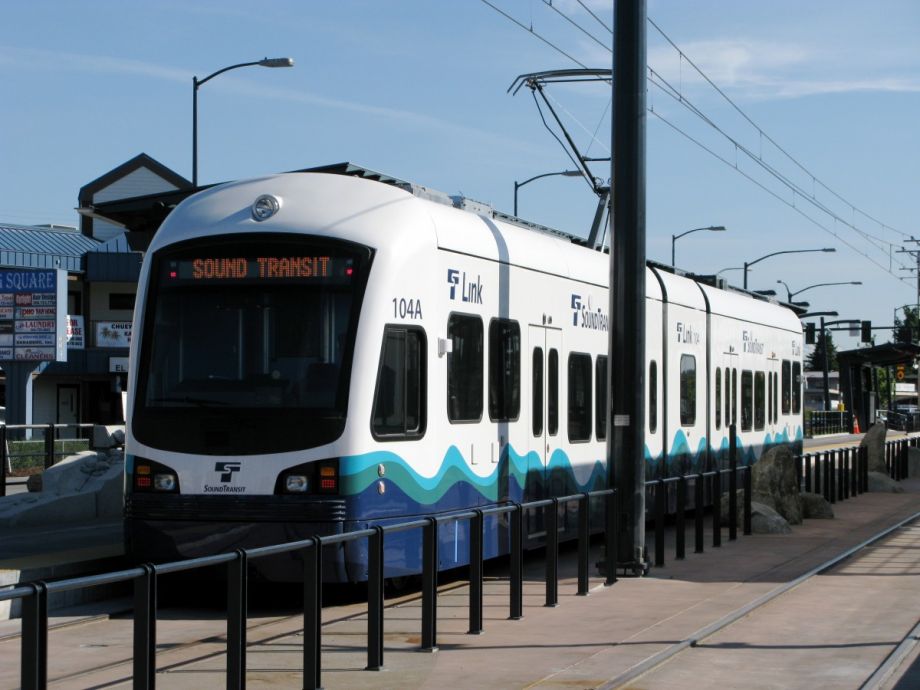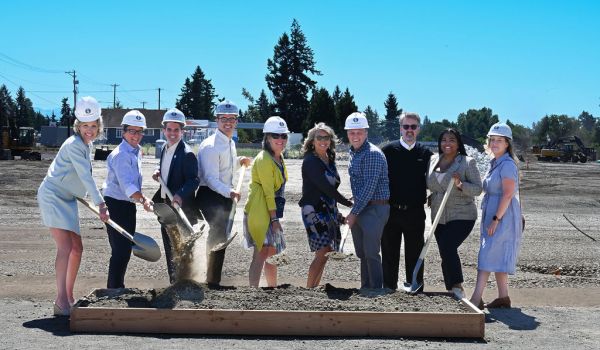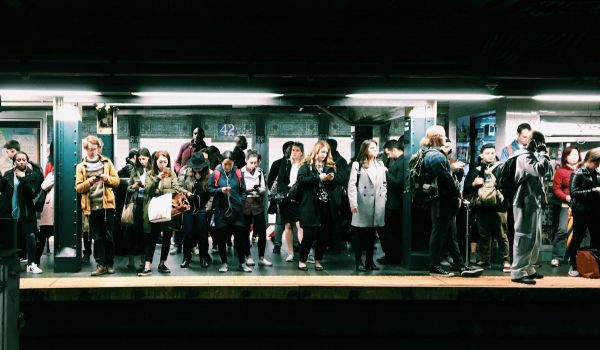In November, voters in the Seattle metro area approved a $54 billion ballot measure to fund the expansion of the region’s public mass transit system. The estimated average annual increase of $169 per taxpayer, for at least the next 30 years, is supposed to pay for 62 new miles of light rail, 37 new light-rail stations, and extended commuter bus and train lines. The plan builds on and extends some existing taxes that paid for earlier transit system expansions.
For some, it’s a massive, expensive waste of money that won’t do anything to reduce the region’s traffic problems. For others, it’s a gesture of love and regional unity, and new connections to economic and cultural opportunities. For the Seattle Office of Housing, it’s an opportunity to kill two birds with one stone.
“We’re looking at not just the cost of the rent and how to make it affordable for low-income households but also trying to reduce the second-highest cost for households, which is transportation,” says Todd Burley, spokesperson for the Seattle Office of Housing.
To that end, Seattle joined with public and private partners from the region and beyond today to launch the Regional Equitable Development Initiative (REDI) Fund, a $21 million revolving loan fund to provide early low-cost financing for acquisition of transit-accessible property to build housing for low-income, working families.
Affordable housing builders aren’t the only ones looking to develop around planned mass transit lines: A line or a station can function like a bull’s-eye in neighborhoods, especially in low- to moderate-income communities where current land values may be relatively inexpensive. The real estate picture can start changing drastically even years in advance of an actual opening of a new line. In anticipation, for-profit, luxury developers — who typically have easier access to cash — buy up lots and buildings, which can lead to rising rents and displacement of longtime residents. The REDI Fund is meant to be a resource to help nonprofit or other affordable housing developers compete.
“Land around transit stations will increase in value, and having the ability to land bank a little bit is important,” says Burley.
Seattle is already a hot real estate market, and the Office of Housing needs to look no further than its own coffers for evidence. The city’s incentive zoning program allows developers to gain a density bonus for their projects in exchange for paying into the city’s affordable housing development loan fund, which the Office of Housing manages. Last year’s round of city loans for affordable housing development was the largest ever, $57 million, and all but $15 million came from incentive zoning program payments, says Burley.
Any properties acquired using the REDI Fund will be required at a minimum to build or preserve a share of homes affordable to households under 80 percent area median income (AMI), and 25 percent of the homes built or preserved using the fund will be affordable to households under 50 percent AMI. (In 2015, Seattle’s AMI was $89,600.)
Affordable housing advocacy nonprofit Enterprise Community Partners designed and capitalized the fund, with the help of regional partners. Enterprise has played a lead role in developing and managing transit-oriented development funds in the Bay Area and Denver.
Though laying new train tracks in a community has played out differently across U.S. cities in terms of real estate prices, Melinda Pollack, director of Enterprise’s Denver region, knows well how a new light-rail line can lead to a marked shift. Denver’s Mile High Connects, a broad coalition to make transit-oriented development in the Denver region more equitable, was partly, she says, “a response to transit-oriented displacement.” Pollack also leads the organization’s equitable transit-oriented development work nationally.
Seattle’s REDI Fund assembles capital from eight different public and private sources, including $6.5 million from the Enterprise Community Loan Fund. There are dispersal rules tied to some of the money — $1 million in public dollars from the city of Seattle must be used exclusively on projects inside city limits — but the fund really targets the whole region.
“While the city has its own challenges, we recognize that we are part of a larger region and that in order for our city to succeed, we need to think beyond the city,” says Burley.
That metro approach required some unique features. The five-member credit committee, which approves loans, has two seats representing the public sector, one of which will change based on where a given project is located. While Enterprise has traditionally worked closely with local government as well as community-based groups around the country, it’s a new arrangement for the public and private entities involved in the REDI Fund.
“It will be a little bit of a learning curve,” says Devin Culbertson, Enterprise senior program director. “Things we think about in approving loans are different, public versus private sector, but that’s part of the challenge and the risk.”
While all developers are eligible to apply for the fund, nonprofit developers will be required to have only 5 percent equity or cash on hand to acquire a property, versus 10 percent equity for for-profit developers. There’s nothing in REDI’s rules that forces developers who receive capital to hire minority subcontractors (a requirement that can level the field for firms owned by women and people of color), but other financing sources for affordable housing construction in the region do have such mandates and are likely to be part of final project financing, according to Culbertson.
While the fund is exclusively available for buildings with multifamily housing, the partners expect mixed ground-floor uses for many of the projects.
“One of the things you get is flexibility in this fund to hold onto sites for a few years, which is an opportunity to have time to do more coordination with communities about ground-floor use,” says Culbertson.

Oscar is Next City's senior economic justice correspondent. He previously served as Next City’s editor from 2018-2019, and was a Next City Equitable Cities Fellow from 2015-2016. Since 2011, Oscar has covered community development finance, community banking, impact investing, economic development, housing and more for media outlets such as Shelterforce, B Magazine, Impact Alpha and Fast Company.
Follow Oscar .(JavaScript must be enabled to view this email address)
















